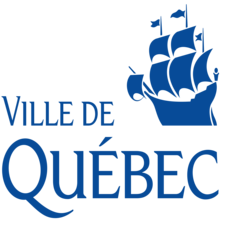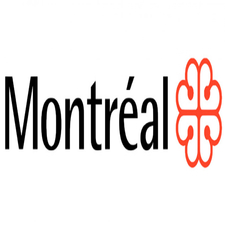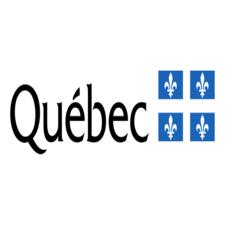Tree
Type of resources
Topics
Keywords
Contact for the resource
Provided by
Formats
Representation types
Update frequencies
status
-

Cartography of the vegetation cover of Quebec City. The canopy represents the projection on the ground of the tops (crown) of trees (including leaves, branches, and trunks), which is visible from the sky. The data comes from two satellite images covering Quebec City taken by the Pléiades satellite pair on June 24 and July 13, 2015 (spatial resolution of 50 cm).**This third party metadata element was translated using an automated translation tool (Amazon Translate).**
-

Data on locations reserved for planting in areas designated as “public domain” including street borders and off-street areas (parks and public squares). This data is complementary to [tree assets] (https://donnees.montreal.ca/dataset/arbres). Please note that in many cases, the City's data on the spatial location of trees may be inaccurate or out of date. In addition, in some boroughs, park trees are not indicated.**This third party metadata element was translated using an automated translation tool (Amazon Translate).**
-

Data on trees belonging to the municipality, referred to as “public domain”: street and off-street trees (parks and public squares). Please note that in many cases, the City's data on the spatial location of trees may be inaccurate or out of date. In addition, in some boroughs, park trees are not indicated.**This third party metadata element was translated using an automated translation tool (Amazon Translate).**
-

Extent of plant cover formed by trees on the territory of the City of Montreal. The canopy is the summation of the projections to the ground of each tree crown or group of trees over 3 meters in height. It is represented on surfaces, even for isolated trees. No cells are used in this layer.**This third party metadata element was translated using an automated translation tool (Amazon Translate).**
-

Mapping of unlisted trees in Quebec City.**This third party metadata element was translated using an automated translation tool (Amazon Translate).**
-

Mapping of listed trees in Quebec City.**This third party metadata element was translated using an automated translation tool (Amazon Translate).**
-

Polygons representing priority areas to be greened on the territory of the City of Montreal to reduce the impacts of heat waves. Three priority levels were defined using a methodology that aimed to meet the following 5 objectives: 1. Reducing the vulnerability of Montreal to heat waves 2. Decrease the area of heat islands 3. Increase the canopy index in the most tree-deficient areas 4. Reducing the impacts of heat waves on the most sensitive groups 5. Greening living environments as a priority (residential and community sectors) This layer will be used to monitor the evolution of one of the eight indicators of the 2020-2030 Climate Plan [2020-2030 Climate Plan] (https://portail-m4s.s3.montreal.ca/pdf/Plan_climat%2020-16-16-VF4_VDM.pdf), i.e. the number of plantations in vulnerable sectors with a target of 500,000 trees to be planted by the City and its partners. It will also help to better plan and prioritize greening projects that are often expensive (e.g. green roofs, new parks, green corridors, expanded tree planting areas, vegetated overhangs or medians, etc.). The data can also be consulted on the [interactive map of climate change vulnerabilities in the Montreal agglomeration] (https://experience.arcgis.com/experience/944e0b7104bd491591ccca829da24670/page/Page/).**This third party metadata element was translated using an automated translation tool (Amazon Translate).**
-

__The link: * Access the data directory* is available in the section*Dataset description sheets; Additional information*__. Ecoforest maps in PDF format are available at a scale of 1/20,000 and cover Quebec territory approximately up to the 52nd parallel. Each map covers an average area of approximately 250 km2 and presents forest information for the territory concerned. Its accuracy is approximately 10 meters. These maps are an image of the current ecoforest map for the corresponding year. __Maps 2021, 2022, 2023 and 2024__ The maps 2021, 2022, 2023, as well as those of 2024 are produced from the up-to-date ecoforest map of the corresponding year. It represents the result of the photo-interpretation of aerial photographs taken during the 4th and 5th ecoforestry inventories of southern Quebec to which were added natural disturbances (fires, epidemics, windfalls, etc.) and forest interventions (harvesting and reforestation) carried out in the public forest following the year in which the picture was taken. According to the maps, data using the forest stand inventory approach (AIPF) is included when available for a complete sheet. Main components: type of vegetation (forest species group, density class, class of density, class of height, age class, etc.) or type of AIPF vegetation (detailed forest species, density (%), height (m), age class, etc.); slope class; class of slope; nature of the terrain (peatlands, height class, age class, etc.); topography (level curves); fragmentation. __2019 and 2020 maps__ The 2019 maps, as well as those of 2020, are produced from up-to-date ecoforest maps of the corresponding year. They represent the result of the photo-interpretation of aerial photographs taken during the 4th and 5th ecoforestry inventories of southern Quebec to which were added natural disturbances (fires, epidemics, windfalls, etc.) and forest interventions (harvesting and reforestation) carried out in the public forest following the year in which the photo-interpretation of aerial photographs from the 4th and 5th ecoforestry inventories of southern Quebec were taken. An update is then carried out taking into account natural disturbances (fires, epidemics, windfalls, etc.) and forest interventions (harvesting and reforestation) carried out in public forests. The information presented corresponds to the current ecoforest map of 2019 or 2020 as the case may be. On each of the maps, the name of the stands is expressed by the group of species. Main components: type of vegetation (forest species, density, height, height, age class, etc.); slope class; nature of the terrain (peatlands, gravel, etc.); hydrography (lakes, rivers, streams, streams, swamps, etc.); transport network and swamps, etc.); transport network and bridges; topography (level curves); fragmentation. __Maps 2015__ The 2015 maps are produced from the photo-interpretation of aerial photographs from the 3rd and 4th ecoforest inventories of southern Quebec. An update is then carried out taking into account natural disturbances (fires, epidemics, windfalls, etc.) and forest interventions (cutting and planting) carried out in public forests. The information presented corresponds to the 2015 updated ecoforest map. MAP FOR PRINTING (GEOREFERENCED)**This third party metadata element was translated using an automated translation tool (Amazon Translate).**
-

__The link: *Access the data directory* is available in the section*Dataset Description Sheets; Additional Information*__. Formerly, forest maps were produced by the Land Survey Department of the Ministry of Lands and Forests. Some of these maps dating **from 1924 to 1946** still exist and are treasured at the National Archives of Quebec. The information they contain makes it possible to locate and characterize forest areas in certain regions of Quebec. Color codes were then assigned for each of the following classes: young forests, old forests, burned, logged, rocky, savannas, and colonization. **These historical forest maps are available in two digital formats (PDF and TIFF) . ****This third party metadata element was translated using an automated translation tool (Amazon Translate).**
-

Data on the felling of trees belonging to the municipality designated as “public domain.” This data contains street and off-street trees (parks and public squares) since the period between 1989 and 1991, the first period of massive inventory in Montreal. Please note that in many cases, data concerning the spatial location of trees may be inaccurate. In addition, it is important to mention that this set only shows the tree felling collected in Montreal's centralized system. Some boroughs therefore do not fit into it. For more information on public trees in Montreal, please consult the set: [Public trees on the territory of the City.] (/dataset/trees)**This third party metadata element was translated using an automated translation tool (Amazon Translate).**
 Arctic SDI catalogue
Arctic SDI catalogue